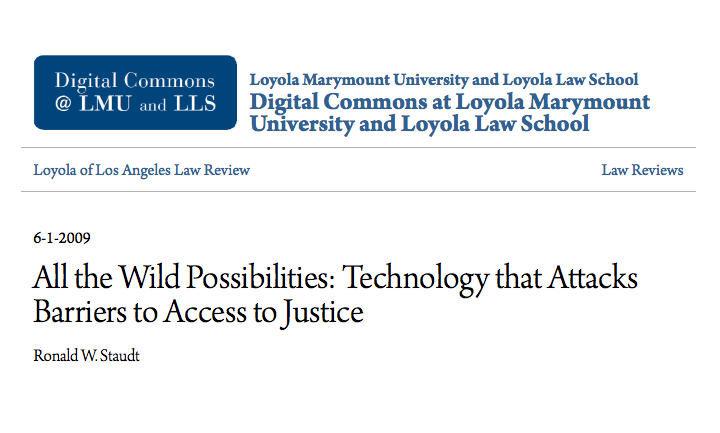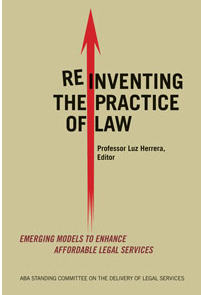In December 2013, the LSC released a report on their past meetings on how to use technology to expand access to justice. It outlines their vision of providing an Integrated Service-Delivery System, state by state, that would allow consumers to enter a single portal to get their legal needs addressed.
The report comes out of in-person meetings since 2011 between legal leaders that the LSC had convened to explore how tech could be used to give access to legal help to the people who can’t afford an attorney for civil legal needs. First they identified ideal ways tech could be used, without concern for cost or viability. Then in the next meeting, the group developed more concrete, feasible proposals for how systems could be developed.
The group had identified six possible activities, promising for access to justice:
- Document assembly for self-represented litigants;
- Triage systems, to help clients identify the most appropriate form of service they need;
- Mobile-based tech;
- Remote service delivery;
- Expert systems and checklists; adn
- Unbundled Services
Out of these six possible themes of activity, the group developed a vision statement, comprised of 5 main components, along with an action plan.
The vision statement:
- Creating in each state a unified “legal portal” which, by an automated triage process, directs persons needing legal assistance to the most appropriate form of assistance and guides self-represented litigants through the entire legal process
- Deploying sophisticated document assembly applications to support the creation of legal documents by service providers and by litigants themselves and linking the document creation process to the delivery of legal information and limited scope legal representation
- Taking advantage of mobile technologies to reach more persons more effectively
- Applying business process/analysis to all access-to-justice activities to make them as efficient as practicable
- Developing “expert systems” to assist lawyers and other services providers
The action plan centers around the development of state legal portals. Each portal would use a Triage algorithm to direct people to the correct services, and then would provide the user with a wealth of referrals to courts and legal aid entities, along with a selection of online services including document assembly apps.
The documents created through the system would be ‘smart’ — the information would be tagged and machine-readable, so that it would not have to be re-entered, and that it can be communicated easily to all other legal aid providers and court systems who might need to use it.
The Triage system would also be ‘smart’ in that it would effectively diagnose how much in-person legal work a case would need, and proceed accordingly. It would rely on Business Process Analysis to map out the tasks included inside case types, and identification of new processes that would coordinate and achieve these tasks in a more efficient way.
To move forward with this plan, the LSC plans to put together a Steering Committee to direct an initiative and arrange for funding for a plan — as well as developing further outreach to bring in more actors into this movement.



